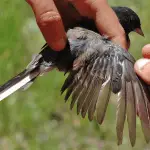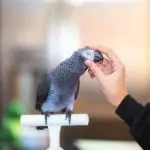As a bird owner, there are many things to consider for ensuring that your pet bird receives the ideal care that it deserves. One of their caring requirements is having bird perches, which is why it is important that you can provide them high-quality ones. Most birds use these perches for playing, singing, courting each other, resting, and sleeping. So, here are some important things to learn about providing one for your pet bird.
Why Do Birds Need Perches?
When birds are not roaming around the house, they are just standing. This is where a good and sturdy perch comes in. Aside from serving as a place to stand, climb, or play around, these perches also serve as a place where the birds rub and clean their beaks, and they also serve as a thing for chewing whenever they are getting bored.
This is why bird owners must be able to provide perches of different sizes, so the bird has something to firmly grasp and cling on throughout its daily life. Different lengths and diameter are also important so that the bird is free to choose the one which is most comfortable for them.
What Are The Types of Perches?
For the best life experience, birds must be provided with disposable perches or perches that they can normally enjoy. No worries about going natural, as chewing wood is normal behavior that is both enjoyable and beneficial for the bird. You can use the following things.
- Wooden Dowels – These items can be bought from bird pet stores, and these usually come in similar sizes.
- Ropes – Some great perch options are ropes made from untreated cotton and hemp. This can provide the birds with great foot texture, not mentioning the natural swing that they can enjoy while they are perched here. When these ropes get dirty, it is quick and easy to clean them using a dishwasher.
- Ceramic or Cement Perches – This type of perch can help in wearing down their beaks and nails. But, if this is the only type available, the wearing down can be too much.
- Plastic Perches – This type of perch can be easy to clean, and they are sturdy, too. The downside is that they can become slippery, which can be threatening for the bird.
- Natural Branches – The best option is to gather branches from non-toxic trees as they come with high quality, and they are also very affordable. Since these branches are what birds usually come for when they are in the wild, everything will feel natural to them because of this. Bird owners just have to ensure that they will scrub the branches thoroughly and clean them with detergent to rinse them well. Owners should also dry the branches in the sun or bake them for 30 minutes, with the temperature ranging from 150 to 200 degrees Fahrenheit.
Types of Wood That Are Safe to Use For Bird Cages
Acacia – Silk Tree
Apple
Ailanthus
Alder and White Alder
Almond
Aralia
Ash
Aspen
Bamboo
Barberry- Berberis
Birch –
Beech or Fagus
Bois D’arc or Horse Apple
Bottle Brush
Butterfly Bush
Camellia
Citrus Trees – including Lime, Kumquat, Grapefruit, Orange, Lemon
Cork
Corn Plants
Cottonwood
Crabapple
Crape Myrtle
Date
Dogwood
Douglas Fir
Dracaena
Elm
Escallonia
Eucalyptus
Fig
Fir
Ginkgo
Grape Vines
Grape Palm
Guava
Hackberry
Hawthorn
Hibiscus
Hickory
Ironwood
Jade Plant
Kalanchoe
Larch
Lilac
Madrona
Magnolia
Maple
Manzanita
Mesquite
Mimosa
Mountain Ash
Mulberry
Nandina
Norfolk Island Pine
Nut Trees except for the Chestnut
Orange
Oregon Grape
Palm
Papaya
Pear
Pecan
Pine
Photinia
Poplar
Pussy Willow
Raphiolepsis
Ribbonwood
Rose
Rubber Plant
Russian Olive
Sassafras
Silk Tree
Spiraea
Spruce
Staghorn Sumac
Strawberry Tree
Sweet Gum
Sycamore
Thurlow
Tree Fern
Viburnum
Vine Maple
Weeping Willow
Weigela
Yucca
Dangerous Woods You Should Never Use For Your Bird Cage
Alder – Red Alder
Andromeda – Pieris
Apricot
Arrowhead Vine
Australian Flame Tree
Australian Umbrella Tree
Avacado
Azalea
Baneberry
Beans, including Castor, Horse, Fava, Broad, Glory, Scarlet Runner
Black Locust
Box Elder
Boxwood
Buckthorn
Bracken Fern
Burdock
Cacao
Camel Bush
Canary Bird Bush
Cannabis
Castor Bean
Cedar
Chalice
Cherry
China Berry Tree
Chinese Magnolia
Chinese Popcorn / Tallow
Chinese Snake Tree
Common Sage
Coriander
Cilantro
Datura
Daphne
Datura Stramonium
Dieffenbachia
Elderberry
Euonymus
Euphorbia
Felt Plant
Flame Tree
Firethorn
Flame Tree
Foxglove
Golden Chain Tree
Ground Cherry
Crown Of Thorns
Heaths
Hemlock
Holly
Honey Locust
Horse Chestnut
Huckleberry
Hydrangea
Jasmine
Juniper
Kalmia
Kentucky Coffee Tree
Lantana
Laurel
Leucothoe
Lupine
Mango
Mexican Breadfruit
Mock Orange
Monstera
Mountain Laurel
Myrtle
Nectarine
Nutmeg
Oak
Mistletoe
Oleander
Peach
Pear
Penciltree
Pitch Pine
Plum
Prairie Oak
Privet
Rain Tree
Red Maple
Red Sage
Redwood
Sequoiadendron
Metasequoia
Sequoia
Rhododendron
Rhubarb
Sandbox Tree
Solanum
Sophora
Sumac
Tobacco
Tansy
Tomato
Umbrella Tree
Walnut
Weeping Fig
White Cedar
Witch Hazel
Wisteria
Yew
What Size of Perch Should You Create?
If you want to provide your bird with a large cage, you must provide it with varied perch sizes. Also, as long as your bird has the perfect room to sit perfectly, the perch is sufficiently sized. You can also be able to set up a custom-sized one, but remember that thin branches are perfect for this. Thin branches are much easier to size and insert across the cage bars.
How To Install Natural Tree Branches For Your Birds?
Because thin tree branches are quite easy to manipulate, it can be definitely easy to attach them to a cage. There would be no need to fix them in like a screw. Just make sure to pick the right diameter, and it will snug at ease between the bars on each side of the cage. It will also be easier if you use some plastic zip-ties. You can also use some wingnuts, bolts, and washers to secure each cage.
The best perches for small to medium-sized pet birds must be around 1 cm to 2 cm in diameter. In larger birds, a good variety will excite your pet.
Tips In Creatively Installing Natural Tree Branches
- Pick the right branches. – Once you have chosen a safe tree, look for the perfect size appropriately for your bird. Make sure that you pick branches that will be able to support the weight of your pet and make sure that they have enough diameters for grasping. Also, check that the foliage of the chosen tree can keep the birds occupied with stripping leaves and bark for hours.
- Cut the ends of the branches so that they will be as long as the cage is wide. – Bird owners must use a saw to ensure that the full branch diameter is exposed on both ends. Never use shears because they will lead to pinched ends.
- Test the branches for strength. – Prop the branches into two-level objects, for instance, the back of two chairs. Walk your pet over to the branches and allow your pet to try each of them out for size.
- Stay away from sand perches. – Sandpaper or sand perches can hurt avian pets in several other ways, which includes causing a great deal of stress and discomfort. These surfaces are also cold; therefore, these will dry out the feet of your pets.
- Enjoy the process. – Play around with your ideas and find different ways until you perfect the tastes of your pet bird.


